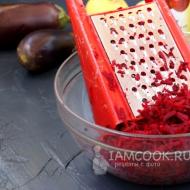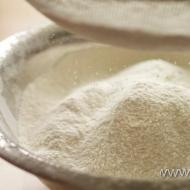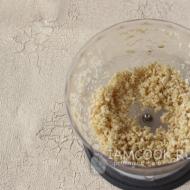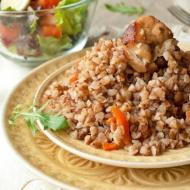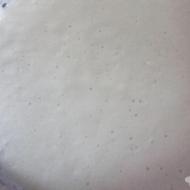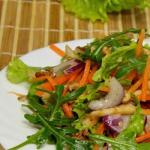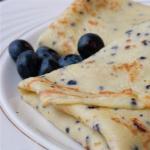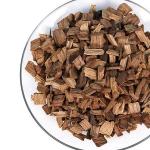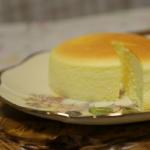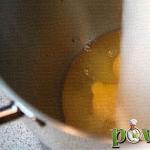
What is the difference between homemade cottage cheese and store-bought cottage cheese? Beneficial properties of homemade cottage cheese for humans Calorie content of cottage cheese made from whole cow's milk
| product | calorie content | squirrels | fats | carbohydrates |
| low-fat cottage cheese (0%) | 71 kcal | 16.5 g | 0.0 g | 1.3 g |
| cottage cheese 5% fat | 121 kcal | 17.2 g | 5.0 g | 1.8 g |
| cottage cheese 9% fat | 159 kcal | 16.7 g | 9.0 g | 2.0 g |
| cottage cheese 18% fat | 232 kcal | 14.0 g | 18.0 g | 2.8 g |
| homemade cottage cheese | 230 kcal | - | 18.0 g | - |
Cottage cheese is a fermented milk product that is obtained by fermenting milk. At all times, cottage cheese remains one of the most revered and consumed products.
Composition of cottage cheese
Everyone knows the enormous benefits of fermented milk products. Cottage cheese contains protein, lactose, minerals, fat, enzymes and vitamins. The total amount of vitamins reaches 12%. These include vitamins A, D, C and B vitamins. With a low carbohydrate content (about 3%), cottage cheese contains a huge amount of calcium, iron and phosphorus. For example, 100 g of cottage cheese is obtained from 250 g of milk. It follows that the nutritional value of this product is much higher than that of milk. All this makes cottage cheese a unique product.
What determines the calorie content of cottage cheese?
As noted earlier, the calorie content of cottage cheese is due to its fat content.
The calorie content of the finished product also depends on the cooking technology. The preparation of full-fat and semi-fat cottage cheese involves the use of rennet enzymes. The process of making cottage cheese eliminates the need for heat treatment and is based on the use of rennet and calcium chloride. Due to this, the fat content and calories of cottage cheese increase significantly. When preparing low-fat cottage cheese, the acid method is used, that is, the cottage cheese is obtained as a result of lactic acid fermentation.
The heat treatment process allows you to reduce the calorie content of cottage cheese. To do this, so-called fermented milk starter is added to fresh milk. The resulting clot is heated to 40 degrees. This allows you to reduce the fat content in the product and reduce the nutritional value of cottage cheese.
The calorie content of cottage cheese is influenced by the quality of the raw materials from which the product is produced. It includes cow's milk of at least second grade, premium whole milk powder, skimmed milk powder, powdered cream and unsalted butter. The calorie content of cottage cheese depends on the fat content of the original raw material. Peasant cottage cheese is considered more nutritious. It is prepared from skim milk with the addition of cream. The fat content of cottage cheese is from 5 to 6%. Soft cottage cheese also has a significant calorie content. When preparing it, cream is added. As a result, the fat content of the finished product is about 11%.
Cottage cheese is a fermented milk product that is obtained from milk. This is nothing more than a protein mass that can be obtained through the simple process of fermenting or souring milk. When exposed to heat, milk produces whey and pieces of sour milk. Cottage cheese, the calorie content of which is of interest to many people who are losing weight, has a lot of useful properties in its composition, since lactic acid bacteria are a prerequisite for the normal functioning of the gastrointestinal tract.
Every woman or girl who closely monitors the slimness of her figure probably thinks about how many calories cottage cheese contains. This product is generally not liked by children, as well as some adults. Therefore, with the help of culinary processing, you can use cottage cheese, the calorie content of which we will definitely consider, to create many tasty and unusual dishes, for example, yogurt, cheesecakes, casseroles, etc. Athletes know that by consuming cottage cheese, the calorie content of which is negligible compared to its nutritional value. , they will enrich their body with proteins. Therefore, those who are engaged in bodybuilding build muscle mass also thanks to the proteins in cottage cheese. We will look at the calorie content of the product in a separate chapter, and also find out the calorie content of homemade cottage cheese.
Calcium is known to strengthen bones and nails. Cottage cheese has many vitamins and minerals. But first things first.
How many calories does cottage cheese contain?
Those who persistently search for a suitable diet for themselves, arrange fasting days and torment themselves by giving up many healthy foods, are accustomed to counting the calories of the food they eat. Therefore, the first question that worries the ladies is: how many calories are in cottage cheese? When choosing a product in a store, many people look on the cottage cheese label not only for the expiration date, but also for the calorie content of the cottage cheese. But, alas, you have to calculate the indicators yourself.
So, before counting the calories of cottage cheese, you need to find out what kind of product and with what percentage of fat content you are buying. There are fatty types of cottage cheese, semi-fat and completely low-fat products. If you think logically, low-fat cottage cheese will have low calorie content.
To produce homemade cottage cheese, whole milk is used, which contains more than 18% fat. If we talk about the calorie content of homemade cottage cheese, then women who are very worried about their figure should not eat it. For this category of the population, low-fat cottage cheese was invented; its calorie content is 106 kcal per 1000 grams of product.
There is also a third option - semi-fat cottage cheese. Calories of semi-fat cottage cheese – 165 kcal. Each person has the right to choose between types of product, taking nutritional value as the basis for the choice, or be tormented by the question: how many calories are in cottage cheese. You can find another name in the store - calcined cottage cheese, which contains calcium chloride. This is an even more fortified product from a fermented milk batch.
Homemade cottage cheese: calorie content and beneficial properties
 The healing composition of cottage cheese contains many useful substances: vitamins, minerals, organic compounds. Why do athletes value cottage cheese? Casein can completely replace animal proteins, that is, meat and fish.
The healing composition of cottage cheese contains many useful substances: vitamins, minerals, organic compounds. Why do athletes value cottage cheese? Casein can completely replace animal proteins, that is, meat and fish.
Calcium and phosphorus in cottage cheese help strengthen bones and form bone tissue. Despite the calories in cottage cheese, its nutritional value is much higher. Amino acids have a beneficial effect on the functioning of the liver and kidneys.
The calories in cottage cheese don't count compared to the enormous benefits that the product brings to the body. Fermented milk product is successfully used in cosmetology to give the skin a healthy, radiant appearance. All advantages apply to homemade and store-bought cottage cheese.
But among the range of fermented milk products there are many products that do not benefit the body (glazed cheese curds, curd masses). Therefore, choose fresh, low-calorie cottage cheese among this abundance; its calorie content will not bring you additional weight.
Calorie content of low-fat cottage cheese and its nutrients
Low-fat cottage cheese, whose calorie content is insignificant, is popular in the diet food system among other low-calorie products. A product with low energy value is successfully used by patients in the diet of fasting days. If you compare cottage cheese with meat, then it does not contain purines harmful to the body.
Regardless of the specific amount of calories, cottage cheese contains antiseptic substances that inhibit the growth and reproduction of putrefactive bacteria, which are needed in the human intestines. Lactic acid bacteria can improve intestinal motility and increase the absorption of important elements - calcium and phosphorus.
Cottage cheese, the calorie content of which depends on your preferences, has a beneficial effect on the nervous system and cardiovascular system. People who have diseases of the digestive system should consume cottage cheese in a slightly processed form, for example, in cheesecakes and dumplings.
How to choose cottage cheese?
Many people ask: how to choose the right cottage cheese in the supermarket? Be sure to pay attention to the packaging and the inscriptions on it. If the product is fresh, then the paint of the symbols depicted will be fresh; everything written can be read without straining. They look at the date of manufacture, as well as the packaging of the cottage cheese.
If a product smells sour, there is a good chance it is stale. In the composition of cottage cheese we read the following: milk, cream, sourdough, calcium chloride. Also, the packaging must contain GOST, and not TU.
If you trust markets more, then it is better to buy homemade cottage cheese from trusted places of sale.
Cottage cheese and a balanced diet
When choosing a fermented milk product in the supermarket, you inevitably think not only about how many calories are in the cottage cheese, but also what the cottage cheese is actually made from. It’s no secret that products are stuffed with preservatives and unnatural substitutes. Those who care about their health need to know that cottage cheese is made from palm and coconut fat. There is simply no milk fat there. Of course, there can be no talk of nutritional value here. Hence the conclusion - buy natural homemade cottage cheese, although its calorie content is high, its beneficial properties are all there.
One of the most common fermented milk products is cottage cheese. Today, there are several types of it, the main difference being the fat content of the product. Various curd masses with flavoring additives or fruit fillings are also prepared from cottage cheese.
Homemade cottage cheese is considered the most delicious and healthy. This product has the highest fat content among other curd products. Depending on the products used, it can reach 30%.
The nutritional value of 100 grams of homemade cottage cheese will be as follows:
- proteins 15.5 grams;
- fats from 23 grams;
- carbohydrates 3.3 grams.
Cottage cheese is valued for its high calcium and protein content. This product is useful for almost everyone, it is easily digestible and does not change the acidity of the stomach.
Cottage cheese is the basis of dietary and therapeutic nutrition; it is given to children in the first year of life.
Cottage cheese contains amino acids that our body needs. A large amount of minerals ensures the growth of muscle mass, strengthening bones and teeth. Introducing cottage cheese into your diet will strengthen your heart muscle.
The uniqueness of such a product as cottage cheese lies in its relatively low calorie content and high fat content.
100 grams of homemade cottage cheese contains about 240 kcal.
This is an average because The calorie content of homemade cottage cheese may vary depending on the products used.
According to the classic recipe, you need to use full-fat homemade milk. After settling, a large layer of cream is formed in it, up to a quarter of the total volume. If the fat content of the milk is insufficient, then housewives can add previously collected cream to it. Often, at home, the exact recipe is not followed, and all ingredients are added “by eye.”
Calorie content of low-fat cottage cheese (from 2 percent to 5 percent)
For people who are trying to reduce their weight, it is better to eat low-fat cottage cheese. You can find low-fat cottage cheese on store shelves. This product contains pure protein, but its absorption in the body is poor, since there is no necessary milk fat.
During the process of skimming, vitamins such as A, D, E disappear from milk. This is due to the fact that these vitamins are fat-soluble, and during the process of removing unnecessary fat, they are removed along with it. As a result, the product turns out to be less nutritious and healthy.
To make eating cottage cheese healthy, it is better to choose a product that contains fat, at least in small quantities. Ideal in this case would be low-fat cottage cheese, which can contain from 2% to 5% fat.
100 grams of cottage cheese with two percent fat content contains:
- proteins 18 grams;
- fat 2 grams;
- carbohydrates 3.3 grams.
Skim cheese has the same set of minerals as other types of this product. In industrial conditions, manufacturers can add additional vitamin and mineral supplements to it, which is indicated on the packaging.
With the constant consumption of low-calorie cottage cheese, it is necessary to introduce other products into the diet that could compensate for the lack of vitamins and nutrients.
The calorie content of a 100-gram serving of cottage cheese with 2% fat is 103 kcal.

If the fat content of the product is higher, then the calorie content will increase slightly. Five percent cottage cheese contains:
- protein 17.2 grams;
- fat 5 grams;
- carbohydrates 1.8 grams.
The energy value per 100 grams of five percent cottage cheese is 121 kcal.
The calorie content of low-fat cottage cheese from different manufacturers can vary significantly, it the value can be from 95 to 115 kcal. This difference occurs as a result of the use of various additives or sugar, which gives low-fat cottage cheese improved taste. Therefore, before purchasing a finished product carefully study the packaging, which indicates the composition and calorie content b.
To be sure of the quality of the cottage cheese, you can make it yourself. Low-fat cottage cheese is made from skim milk. To make it at home, you need to ferment milk with the desired percentage of fat content.
How many calories are in low-fat cottage cheese (9 percent)
Low-fat types of cottage cheese are ideal in terms of the ratio of benefits and taste. In this case, with a reduced calorie content, the necessary lactic acids and vitamin D are preserved, without which calcium absorption in our body does not occur.
The nutritional value of 100 grams of low-fat cottage cheese (9%) is:
- proteins 16.7 grams;
- fats 9 grams;
- carbohydrates 2 grams.
The calorie content of a 100-gram serving of cottage cheese with nine percent fat content is 159 kcal.
Half-fat cottage cheese can be consumed in its pure form, with sour cream and sugar. The introduction of additional products will increase calorie content, this should be remembered by people who have problems with excess weight. Also, cottage cheese with 9% fat is perfect for making casseroles, cottage cheese desserts, dumplings and other dishes.

Which cottage cheese is better
If we compare types of cottage cheese with different fat content, we can say that a product with a higher fat content is more beneficial for the body.
But it cannot be said that eating low-fat cottage cheese can be harmful. The thing is that with a balanced diet, our body receives a sufficient amount of the minerals, vitamins and nutrients it needs from other foods. Eating meat and fish will provide the required amount of protein. Vitamins can be obtained from vegetables.
Nevertheless, It is necessary to include fatty dairy products in the diet, such as full-fat cottage cheese, cream, milk, sour cream. Milk fat contains the phospholipids cephalin and lecithin. These components are responsible for transmitting impulses along nerve endings and are the building material of cell membranes.
A complete refusal of fats can cause irreparable harm to health.
To create a diet, it is better to consult a specialist. The nutritionist will create a daily diet taking into account individual characteristics.
A valuable and healthy product, cottage cheese has been consumed since ancient times. Gourmets and food lovers know about his simple invention. The process of preparing cottage cheese is economical and easy. It is consumed with great pleasure by adults and children. Cottage cheese can be mixed with other products and its beneficial qualities will increase.
Benefit
The benefits of consuming cottage cheese are great. People start using it at a very early age.
Cottage cheese is very useful for children, as it contains useful vitamins: calcium, which helps strengthen young bones.
Pregnant and lactating women should definitely introduce healthy foods into their diet. Its benefit lies in the content of minerals, as well as calcium and phosphorus, which have a beneficial effect on the formation of bones, teeth, and also on strengthening the heart muscle.
If you consume homemade cottage cheese in moderation, you can forget about the fact that your liver will get sick; the value of the nutrients is high. This happens because the dairy product contains the amino acid methionine. It does not allow the accumulation of fat deposits. If obesity, thyroid disorders, gout or poor metabolism are detected, it is imperative to introduce homemade cottage cheese into the diet.
Cholesterol levels are reduced due to the lipotropic effect found in milk protein – casein. It also has a beneficial effect on fat metabolism. If you make cottage cheese from goat's milk, it will contain protein and vitamins in the same quantities as in animal meat and its absorption occurs much faster. Patients suffering from diseases such as atherosclerosis should definitely use homemade cottage cheese, but not the fatty variety. Children under three years old can add a homemade product to their diet.
In all important processes that are associated with the metabolism of proteins and carbohydrates, the B group of vitamins takes the first part. With sufficient quantities, the risk of disease penetration is sufficiently reduced, and the normal functioning of the body will continue to work, and the benefits are great. The importance of a lactic acid product depends on the content of several dozen vitamins in it. The purpose of vitamin A found in cottage cheese is to improve vision. When an important element is missing, the well-known disease most often begins, which is popularly called “night blindness.”
Harm
Eating homemade cottage cheese will not only be beneficial, but also harmful. An allergic reaction to the product can occur from improper processing of the cottage cheese, failure to store it properly, and also when harmful microorganisms appear in the product. Harm will also appear due to the consumption of homemade cottage cheese, which is contraindicated for people intolerant to lactose and the calorie content of the product. If consumed in an indefinite amount, the body will receive harm and bad properties from cottage cheese.
Calorie content
The fermented milk product is very low in calories, so it is often consumed by athletes after training. Cottage cheese can be considered in three degrees of fat content and its calorie content. The home-cooked product does not have the three percent fat content of the one sold in the market. 100 grams of homemade cottage cheese contain 166 calories.
| Content | Calorie content per 100 g | 1 glass | 1 tablespoon | 1 teaspoon |
| proteins | 17.6 g | 44 g | 4.4 g | 1.40 g |
| fat | 6.4 g | 16 g | 1.6 g | 4.5 g |
| carbohydrates | 11.3 g | 28.25 g | 2.82 g | 0.90 g |
Contraindications
Like many products have contraindications, homemade cottage cheese also contains them.
Use should be handled with caution by people suffering from allergic reactions. A person who suffers from intolerance to the protein found in milk should exclude homemade cottage cheese from his diet.
Contraindications and harm lie in consuming a product that has passed its consumption dates, as you can get poisoned.
It is not recommended to consume dairy products for people with a weak pancreas. By consuming cottage cheese, which has a high calorie content, the cholesterol content can increase significantly, and then, over time, obesity and atherosclerosis will appear. Excessive consumption of dairy delicacies negatively affects kidney function.
The nutritious product is an excellent breeding ground for E. coli, which cause disruption in the body and direct harm. Therefore, you need to be very careful when consuming homemade cottage cheese. It is also necessary to limit the consumption of cottage cheese for people who are on a salt-free diet, since the benefits will instantly turn into harm.
Application
Most often, a dairy product - homemade cottage cheese - is used for consumption, as it contains vitamins. It goes well with honey, raisins, sugar, and dried apricots. The beneficial properties with this combination increase several times. Cottage cheese is suitable for making dumplings, casseroles, cheesecakes, cheesecakes, and manna cakes. It makes excellent and tasty cheese curds, which children eat with great pleasure.
The dairy delicacy, which has low calorie content and good value, is used to maintain a figure or as a diet that promotes weight loss. It can be used as a medicine. If colds occur, cottage cheese must be mixed with chopped onions, wrapped in gauze and applied to the soles of the feet, as well as to the throat and chest.
A mixture of cottage cheese and honey has a beneficial effect on preventing cough. If your joints are sore, you need to mix the dairy product with chopped horseradish root and onions, then use it as a compress. The pain will disappear when applied to the sore spot about twice a day; its calorie content will not interfere.
Storage
Homemade cottage cheese must be stored in the cold at a temperature of 6 degrees. It must be wrapped in a plastic bag with good strength. It is not recommended to store near products with a strong odor; all the benefits of the product will be lost and it will cause harm. The best container for storing cottage cheese is a container made of metal with an enamel coating. Dairy products are perishable products and generally their shelf life does not exceed three days. In ancient times, clay vessels were used to store the dairy delicacy, and oil was poured on top of it. It was stored in this form for a long time and did not lose its properties. We used only cottage cheese, which underwent heat treatment and pressing in several stages.
The nutritional value
Homemade cottage cheese is high in protein. It is well absorbed in the human body because during fermentation it coagulates in the milk substance - casein. Because of this quality, cottage cheese can be consumed by people of all ages; it is especially useful for older people.
The nutritional value and benefits of homemade milk are quite high, because its preparation is thoroughly processed. With this processing, all the useful and valuable properties of the product are preserved, as well as vitamins, and there are no various additives or preservatives. Due to the protein content, cottage cheese is quickly absorbed in the human body. It also contains the most important amino acids - methionine and tryptophan. They take an active part in the functioning of the digestive system and also support the functioning of the nervous system.
A special table shows the presence of enzymes, the value per 100 g of product:
Vitamins and minerals
Homemade cottage cheese is rich in a lot of minerals and also contains vitamins. If they are in small quantities, the benefits of consuming a dairy product are not great. A lack of curd vitamins and minerals in orgasm will lead to the body’s defenses being greatly reduced and the nervous system to fail. The digestive system will weaken and the nutritional properties will lose power. In addition to the fact that the product contains a large amount of calcium, it also contains minerals such as potassium, magnesium, phosphorus, and iron. The content of important elements protects the body from the penetration of various diseases, good benefits penetrate the body, and beneficial properties increase. 100 grams of dairy product contains the following useful enzymes:
The best cottage cheese is considered to be homemade, made with your own hands. When preparing it at home, it is necessary to follow not only the preparation technology, but also the entire procedure must take place in ideal conditions with cleanliness and accuracy. This is done in order to preserve vitamins. The process of preparing cottage cheese does not take much time, but its properties are great. It requires yogurt made from homemade whole milk. Then it needs to be heated in a water bath, after the curd is separated from the whey, it must be poured into a special gauze bag. Instead of gauze, you can use linen to make a bag.
Fermented milk product is an integral element of our diet; since childhood we have been taught that eating such food is good for health.
All this is true, only there is a “other side of the coin” in the product, it is associated with such a nutritional indicator as the fat content of homemade cow’s milk cottage cheese. The higher it is, the higher the calorie content of the product, and excess calories have a detrimental effect not only on your figure, but also on your health - we’ll talk about this in more detail in the article.
Types of cottage cheese and their effect on calorie content
We will not talk about how and why homemade cottage cheese made from milk is useful. Everyone knows about its miraculous remedies that can positively influence almost all organs and systems of the human body (especially the liver, pancreas, bones, blood vessels, respiratory, nervous and other systems).
We will pay special attention to another factor - the calorie content of homemade cottage cheese. Those who are watching their weight, dieting, or simply limiting themselves in consuming excess calories should know what and how much they consume.
Do not forget that the norm of 100 g of fermented milk product eaten per day can bring a different amount of calories to each consumer.
The fat content of cow's milk cottage cheese depends on several factors: the type of cottage cheese and the fat content of the milk from which it was made. As mentioned above: the more nutritious (fat) the milk, the higher the calorie content of homemade cottage cheese.

Based on this, there are 3 main types of cottage cheese:
- Classic (bold) – 5-15% fat.
- Fat – 16-23% fat.
- Low fat – no more than 1.8% fat content.
If you buy a product in a store, then you don’t need to calculate the fat content of cottage cheese; it will be indicated on the package. All that remains is to calculate how many calories it contains. If you make cottage cheese from milk at home (yourself), then you will have to calculate the fat content yourself.
However, these numbers will be enough to help you figure out what portion you need to consume so as not to harm your health, but on the contrary, to make your body stronger and fitter.
How to calculate the calorie content of homemade cottage cheese
If you do not have a special device to accurately determine this indicator, then you can proceed as follows:
- Pour milk into a glass (it should occupy 10 cm of the total volume of the glass) and leave it in the refrigerator overnight.
- In the morning, the cream will separate from the milk, and you will need to measure it with a ruler. There is 1% fat per 1 mm of soft cream.
- Accordingly, how many millimeters of cream you get in one glass will determine the fat content of your milk.
Example No. 1
If you prepare cottage cheese from 1 liter of cow's milk, the fat content of which is 3%, then in the end you will get about 300 g of cottage cheese (0.3%). The fat content of such a product will be 10%.
To make the result of the calculations clear to you, we present the formula by which the percentage of fat content of cottage cheese is measured at home: ZhM (fat content of milk - 3%) × KM (amount of milk - 1 l) ÷ KPT (amount of cottage cheese obtained - 0.3%) = ZhT (fat content of cottage cheese – 10%).
You can always use this formula at home if you need to calculate the fat content of the finished product. Just plug in your numbers and count.
Example No. 2
There is another formula by which you can calculate the proportion of fat in cottage cheese - multiply the fat content of milk by 4. If you take the indicators from the formula above, it turns out that 3% needs to be multiplied by 4 - you get 12%. It turns out that, on average, the proportion of fat in homemade cottage cheese from 1 liter of milk is 10-12%.
Do not forget that all indicators are rather arbitrary, since our measurements are approximate.
Homemade cottage cheese calorie table
Knowing the fat content of cottage cheese, you can proceed to calculating its calorie content. To make your life easier, we offer a detailed table to help you, which shows different types of homemade cottage cheese and their calorie content per 100 grams of product.
You can always use this data and build your diet according to it. Not every type of cottage cheese is suitable for diets; some types are quite high in calories, and you shouldn’t get carried away with them.
Do not forget also that curd mass contains a lot of protein, this is useful for those who play sports and build muscle mass, but it is very unsafe for people who are obese and have kidney problems.
There must be moderation in everything. Eat as much as a healthy person should - 100-150 g per day, 2-3 times a week.

Remember also that curds with sweet additives, dried fruits and syrups are higher in calories than homemade cottage cheese without additives. Take this into account when preparing the product and properly planning the menu for your healthy diet.
For more information about producing cottage cheese from homemade milk and testing it for quality, read the detailed articles on the website.
Whatever product you decide to make at home with your own hands: cottage cheese with a high percentage of fat or homemade low-fat cottage cheese - the calorie content should always be calculated in advance. This will protect your health from excess fat and prevent the appearance of extra pounds, because the one who owns the information owns the world.



